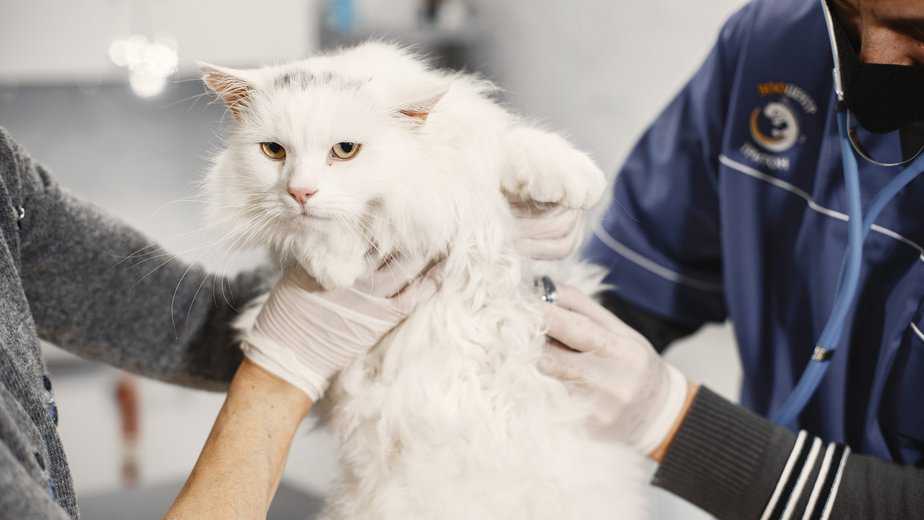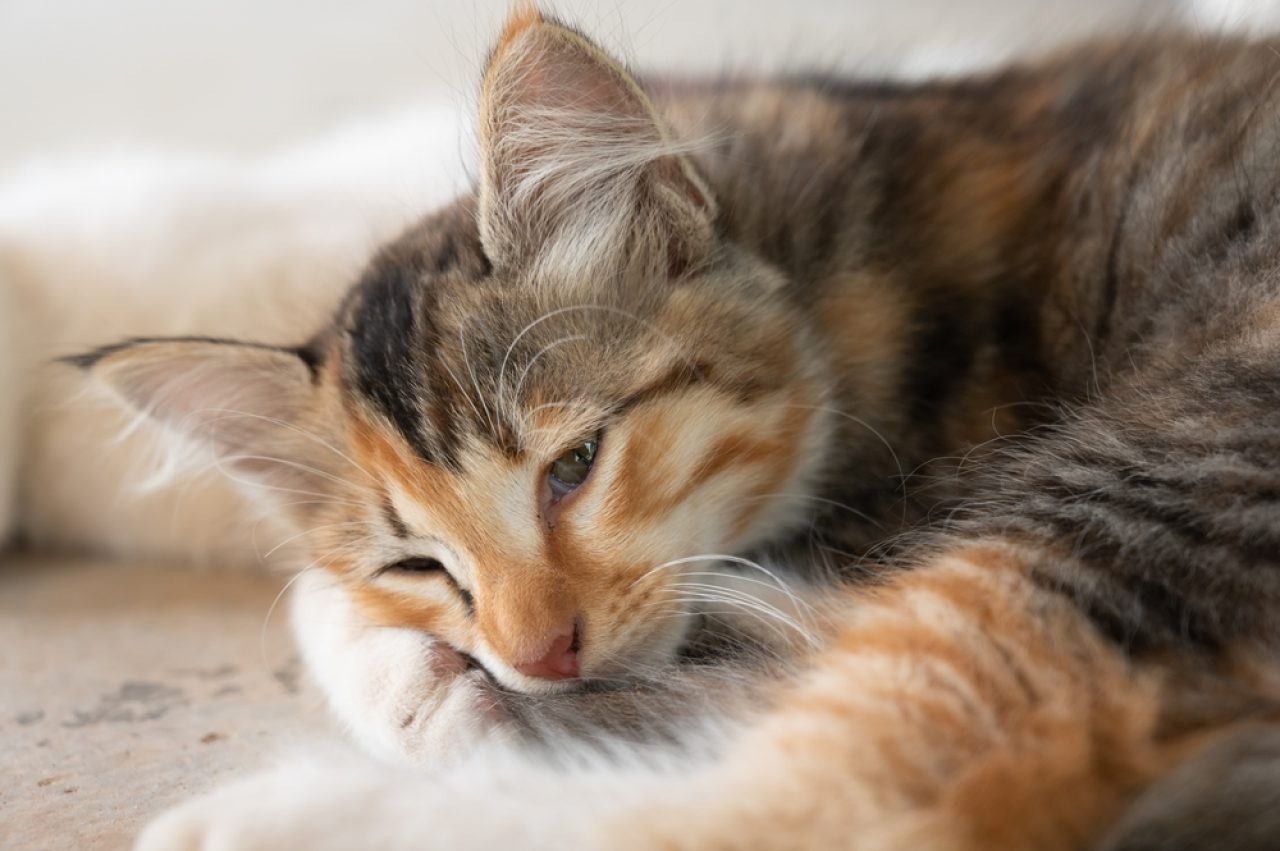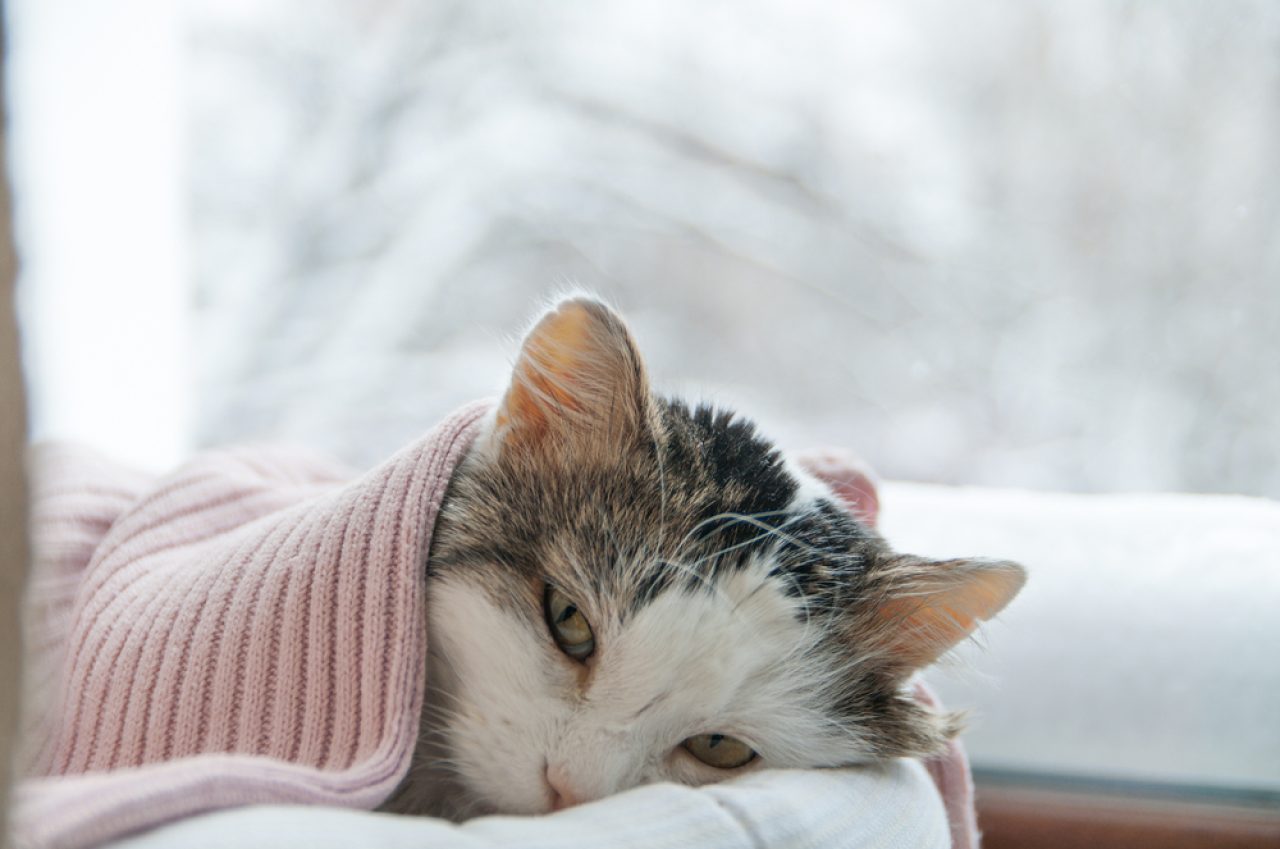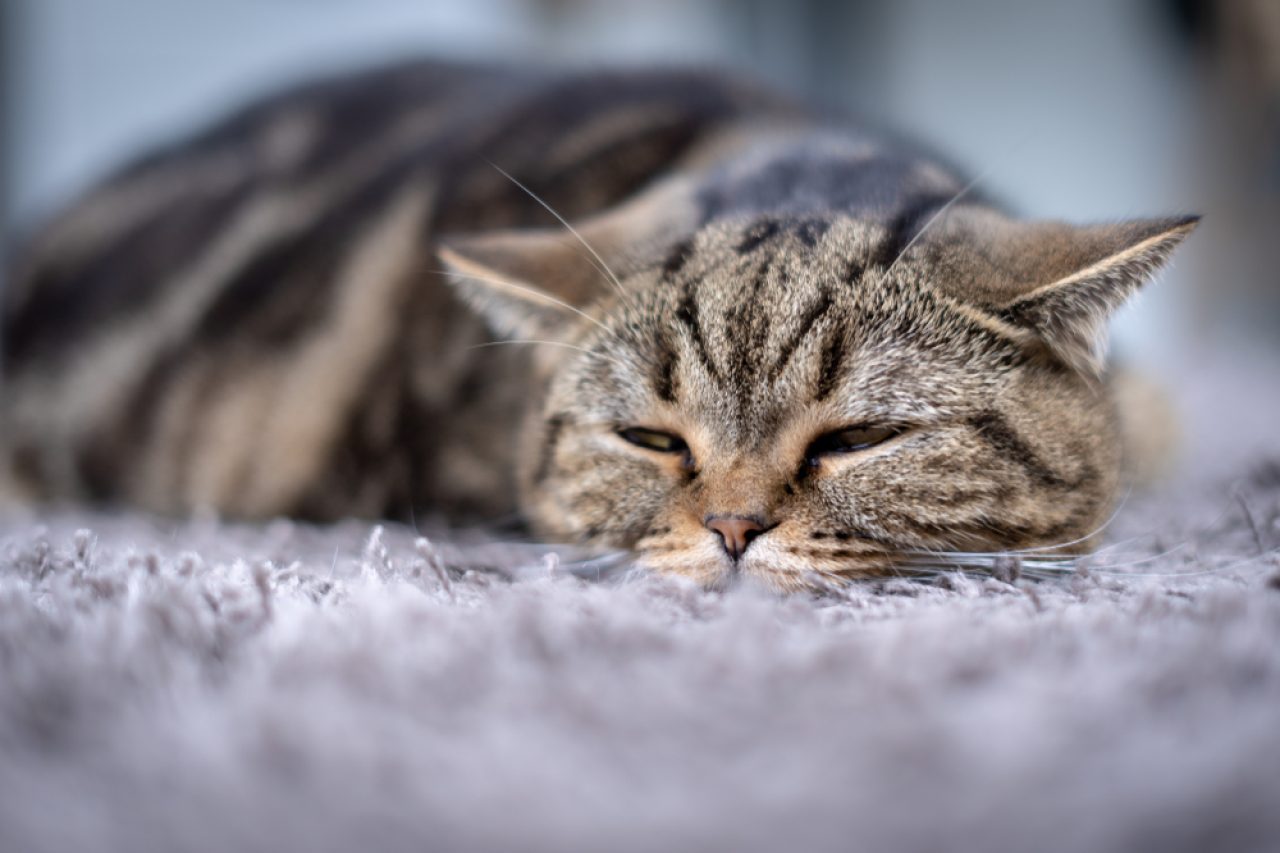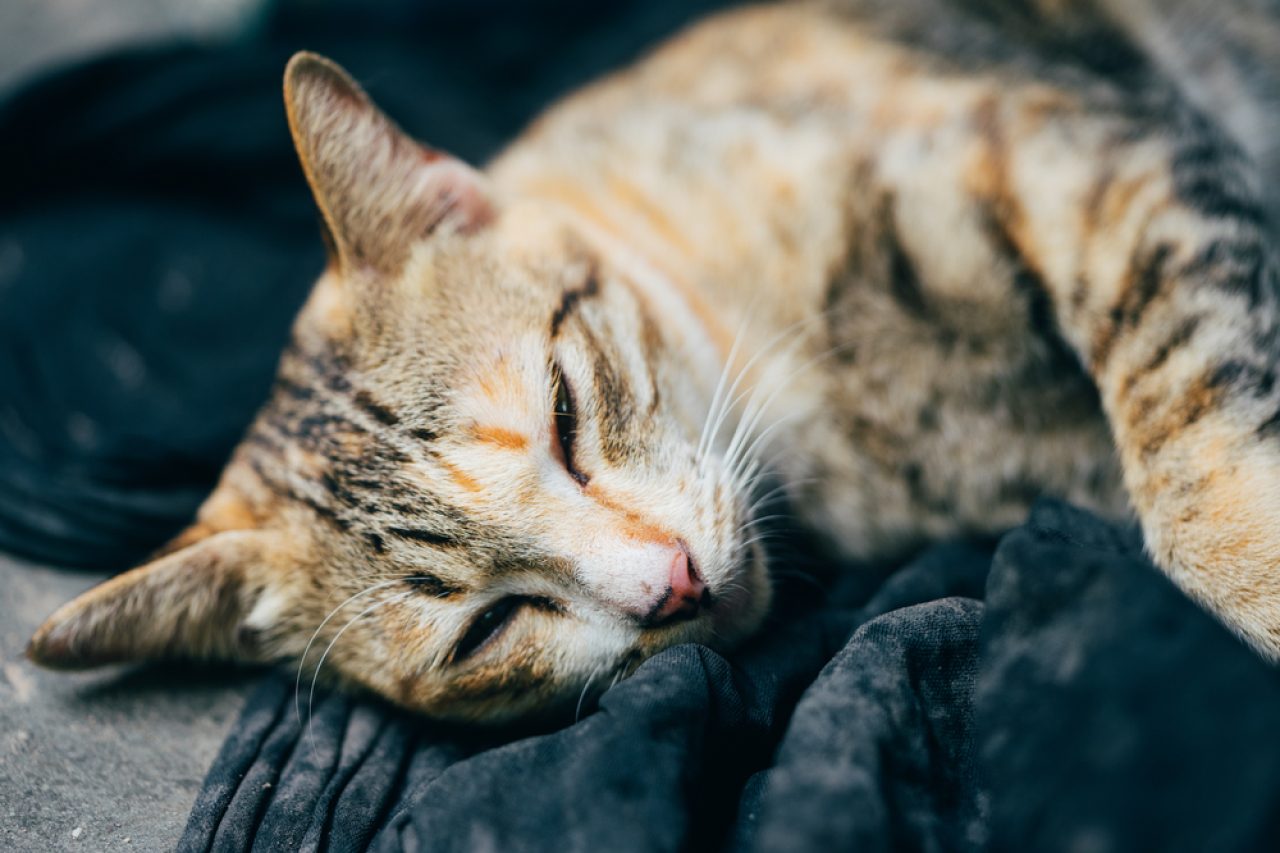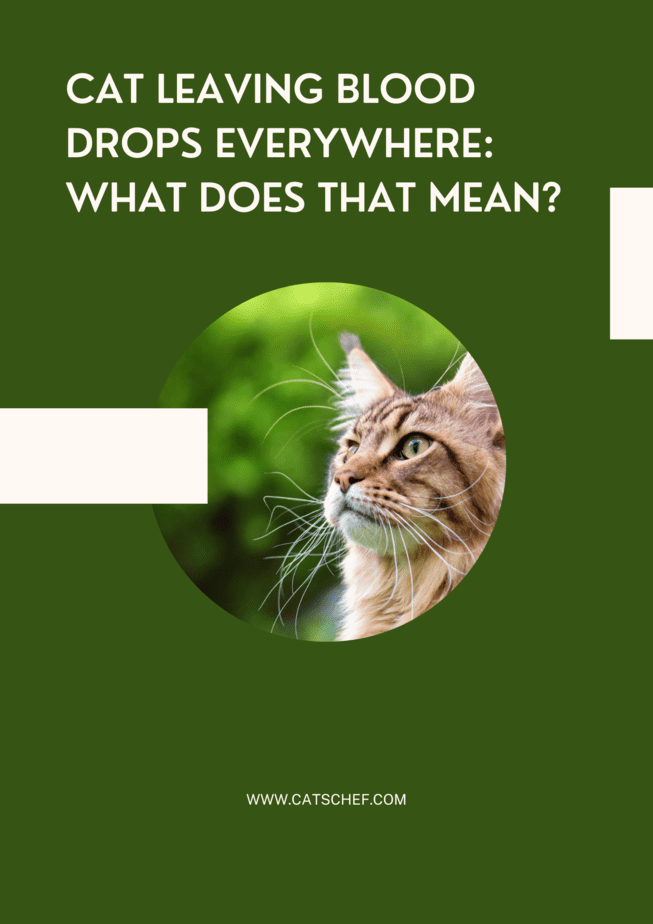📖 Table of Content:
Here’s the thing, your cat’s lack of opposable thumbs and English language skills makes her dependent on you. As a cat parent, you ensure she’s always taken care of. Therefore, when you notice your cat leaving blood drops everywhere she goes, you’re responsible for figuring out what on Earth’s going on.
We understand that she’s a resilient, self-sufficient feline who doesn’t need a human (a.k.a you) to help her do anything.
She can do everything on her own, as long as she doesn’t have to go you-know-where. She can take care of her own health, as long as she doesn’t need to set foot (or paw) into the vet’s office.
On the contrary, there are times when you might notice she’s under the weather because she’s not her regular, frisky self. Maybe she’s not eating as much as she did (working on that beach body). Perhaps she’s not grooming her coat and she’s letting the whole thing become matted and gross.
Whatever the case might be, you’re the one that needs to put a foot down and utter “We’re going to the vet right meow… And, we’re eating your favorite foods, playing your favorite games, and napping as soon as we come back”
Some symptoms might go unnoticed. But, more often than not, when your cat starts leaving blood drops everywhere she goes, you know something’s wrong.
We’re bringing you a bunch of reasons why that might be the case. And, we’re hoping to help you deal with your nerves while you’re waiting for the vet’s appointment.
Why is your cat leaving blood drops everywhere she goes?
Figuring out what’s wrong with your fluffer can be a struggle!
One moment you’re playing with her, tormenting her with her laser beam, and making her run from one side of the apartment to the other. The next, you’re cleaning little drops of blood from the floor and wondering whether you’re the one to blame.
When your cat starts leaving blood drops everywhere she goes, there’s nothing more responsible you can do than these things. Contact your vet. Schedule an appointment. Observe her behavior to check whether you can figure out where the blood’s coming from.
Trust me, that’s the best way to guarantee you can give your vet enough information and ensure your feline friend gets the right diagnosis and proper treatment. Hence, we’ve done some digging.
And, we’re bringing you some of the most common reasons why your feline friend might be bleeding. Or, where she might be bleeding from. Whether she’s bleeding from her ears or she’s bleeding from a wound, we’re keeping our fingers crossed she gets better ASAP.
1. She’s bleeding from her ear
Right off the bat, there are numerous reasons why your cat might be leaving blood drops from her ear on the floor, on your bed, or even outside. And, none of those reasons means you have to get ready to say goodbye to her. As a matter of fact, they’re all treatable.
Starting with the most common reasons, she might have scratched her ear while she was going about her business. Of course, you can check whether that’s the case by taking a closer look. For example, you might see a physical scratch, a wound that’s bleeding, or a little bit of dried-up blood.
On the other hand, she might even have an ear hematoma. It is a pocket of blood that forms on the inside of your cat’s ear. Ear hematomas typically occur after an infection or an ear mites infestation. So, your cat might have been pawing at her ears and scratching her ears while you weren’t looking.
And, there’s always that one reason we hate talking about – carcinoma. An ear carcinoma (otherwise known as Squamous Cell Carcinoma) isn’t that common among felines. Also, that means it isn’t a common reason why your cat might be leaving drops of blood on the floor.
Whatever the case, contact your vet and ease your mind.
2. She’s bleeding from her eyes
That’s the type of bleeding you should be able to notice without batting an eye! It can make you have a moment of freaking out and screaming at the top of your lungs. So, you might wonder “Why would my cat bleed from her eyes?”
And the obvious answer would be that she hurt herself while she was doing something she wasn’t supposed to be doing. Other than a tear, she could be dealing with trauma to the head, some sort of an infection, or even a blood disorder.
Now, you can know for sure when you contact your vet and schedule an appointment. But, you can check how often she’s bleeding and how much she’s bleeding. And, you can see whether she’s experiencing other symptoms to help you figure out what’s wrong.
As a general rule of thumb, more bleeding means more trouble. So, keep an eye on symptoms such as decreased appetite, lethargy, depression, vision loss, bumping into objects, white pupils, dilated pupils, reluctance to go outside, body bruises, bloody urine, or feces.
3. She’s bleeding from her nose
When you notice your cat’s leaving blood drops on the floor and your carpet, don’t freak out. Regular nose bleeds occur due to nose trauma. Hence, you simply have to wait for the bleeding to stop, clean your cat, and comfort her.
However, when the bleeding continues, there’s a chance you might be dealing with something different. It could be a toy (or any other foreign body) trapped in the nose, a dental abscess, a blood clotting disorder, a nasal polyp, a fungal infection, or even cancer.
Other symptoms might include snorting, sneezing, discharge, weakness, lethargy, swelling, pawing at the nose or face, bad breath, and difficulty breathing. Contact your vet the moment you notice any of these symptoms. And, don’t try to get anything out of your cat’s nose without the help of a professional.
4. She’s bleeding from her mouth
What’s more terrifying than finding drops of blood on the floor and noticing they’re not yours? Figuring out they’re your cat’s and they’re coming from her mouth, of course! What on Earth could cause your feline friend to bleed from her muzzle?!
Turns out there are a bunch of reasons why that might happen. Some of them are an infection, a bad tooth, trauma, ulceration, tumor, or an underlying blood clotting problem.
One thing you might want to do when you notice your cat bleeding from her mouth is a thorough examination. When doing that, you may notice whether she’s wounded her mouth, broken a tooth, or started showing other symptoms.
Redness of the gums, swelling, drooling, discharge, and bad breath are some of the most common signs she’s dealing with inflammation. Contrastingly, a mouth tumor would have the same symptoms alongside a noticeable mass (typically under the tongue).
Need we even repeat that you should contact your vet as soon as possible?
5. She’s bleeding from her wounds
Other than the wounds we mentioned beforehand, your fluffer could be bleeding from pretty much any part of her body!
With energetic, fun-loving cats, you never know when they might get the zoomies. They’ll start chasing after everything that’s moving, and hurt themselves because they’re not paying enough attention to their surroundings.
Therefore, when you catch a glimpse of your cat leaving blood drops everywhere she goes, don’t forget to take a look at every nook and cranny of her body. Before you can do anything to help her, you need to make sure you know where the blood’s coming from.
Paws with ripped-out claws, scratched ears, and stomachs with tears from walking through bushes and branches stand out as the most common wounds. Once you find what you’re looking for, you can proceed to clean the wound with warm water.
After that, pat the wound dry. Apply a layer of gauze to stop the bleeding and a layer of bandage-like material to keep the wound safe and secure. Last but not least, contact your vet and schedule an appointment for further instructions.
6. She’s leaving blood drops after peeing
We went through every scenario we could think of, but we haven’t touched upon what happens when you notice your cat leaving drops of blood in her litter box. After peeing or pooping, that is.
And, your mind might go to places you don’t want to go. However, you don’t have much to worry about, considering these conditions are treatable.
Without further ado, causes for a bloody pee are UTIs, positions that might have damaged your cat’s bladder, and bleeding disorders. For the most part, reddish urine means your fluffer’s dealing with urinary tract infections. Crystals in the urine and interstitial cystitis are also common among some cat breeds.
Other symptoms to observe to make sure you’re on the right track are peeing over the edge of the litter box, peeing more frequently than before, peeing larger amounts than before, meowing while peeing, changes to the smell and color of the urine, and licking or cleaning around the genitals.
7. She’s leaving blood drops after pooping
We haven’t finished talking about your cat’s bowel movements! You may notice your cat leaving blood drops in her litter box after pooping. If that happens, don’t wait too long before scheduling an appointment with your veterinarian.
While there are some “harmless” reasons why that might happen, you’re better safe than sorry. However, here’s what she might be dealing with – food allergies, parasites, medication side effects, inflammation, infection, and stress.
That’s right, your fluffy friend might be pooping blood because of those Thanksgiving fireworks. Whatever the reason might be, don’t shy away from contacting your veterinarian and asking for advice. Good luck!
